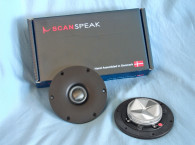
In 2023, Scan-Speak basically discontinued production of the original 19mm ferrite magnet soft dome D2008 models (the D2008/851100 and D2008/851200 Ferrofluid version) and the similar D2010 models (the D2010/851100 and D2010/851300 Ferrofluid version) and replaced them with the new 19mm textile dome neodymium motor versions, the D2008/852100 and the D2010/852100 (Photo 1). Both revised versions of the original highly praised designs are virtually identical except for the faceplates. The new D2008 has a solid plastic 92mm diameter faceplate), while the D2010 has a 98mm diameter plastic faceplate with an acoustic damping rubber insert. (The original D2010 had a foam insert, plus there is no separate Ferrofluid model available.)
The feature set for the Scan-Speak D2008/D2010 tweeters include a 19mm coated cloth dome, a low resonance dual rear chamber (Fs=550Hz), a vented pole piece, long-term maximum power handling of 150W (using a second-order 4kHz high-pass filter), 89dB sensitivity, plus gold-plated terminals.
I began testing the new Scan-Speak D2010 tweeter by generating a stepped sine wave impedance plot using the LinearX LMS analyzer. The result of the LMS 300-point impedance sine wave sweep is given in Figure 1. The resonance of the D2010 tweeter is 545Hz (Qts=0.49). Minimum impedance for the D2010 is 6.55Ω at 3.39kHz, with a 6.20Ω DCR.
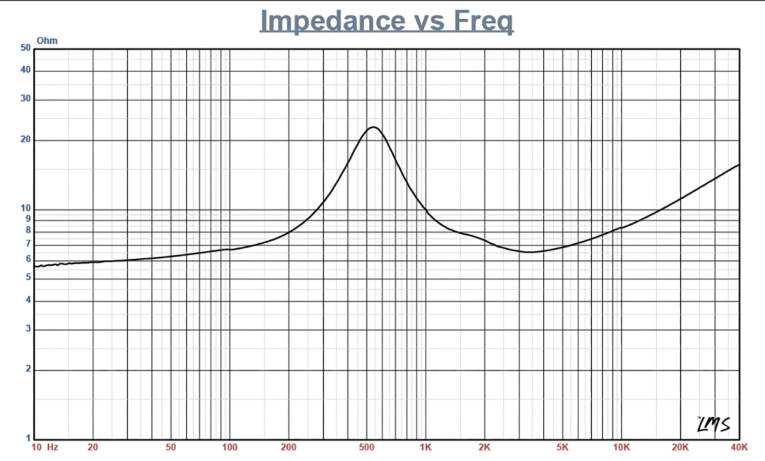
After completing the impedance measurements, I recess mounted the Scan-Speak D2010 tweeter in a bookshelf-size enclosure that had a baffle area of about 14”×6” and measured the horizontal on- and off-axis at 2.0V/0.5m (normalized to 2.83V/1m) from 0° on-axis to 45° off-axis using the Loudsoft FINE R+D analyzer and the GRAS 46BE microphone (supplied courtesy of Loudsoft and GRAS Sound & Vibration).
Figure 2 shows the on-axis response for the D2010, which exhibited a ±1.5dB response from the 4kHz recommended crossover frequency to about 18.5kHz. Figure 3 shows an on-axis comparison of the D2010 and the nearly identical D2008.
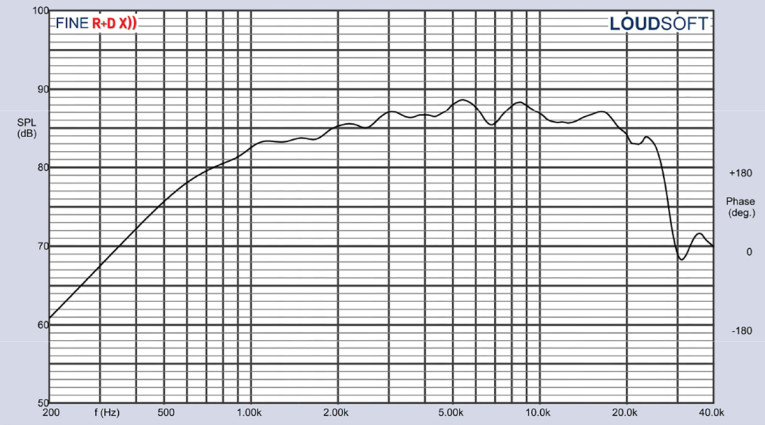

Figure 4 depicts the on- and off-axis (0° to 45°) response of Scan-Speak D2010 19mm soft dome neo version, with the off-axis curves normalized to the on-axis response shown in Figure 5.
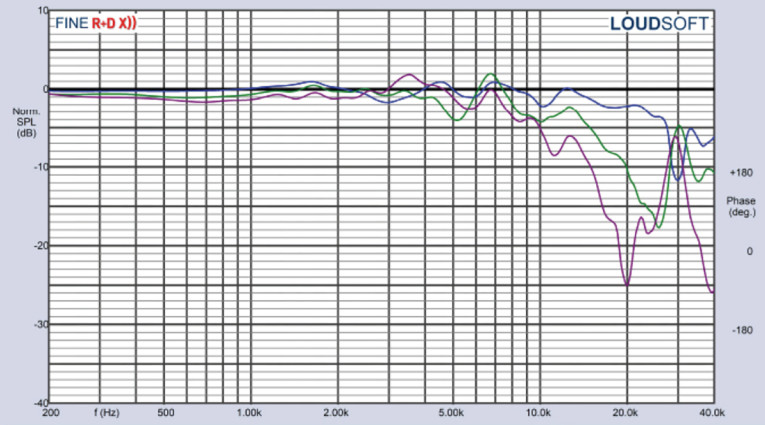

Figure 6 shows the 180° horizontal polar plot (in 10° increments with 1/3 octave smoothing applied), generated by the CLIO Pocket analyzer and accompanying microphone (courtesy of Audiomatica SRL). Last, Figure 7 gives the two-sample SPL comparison showing the two Scan-Speak D2010 samples to be closely matched within ≤1dB throughout the drivers operating range from 4kHz to 20kHz.
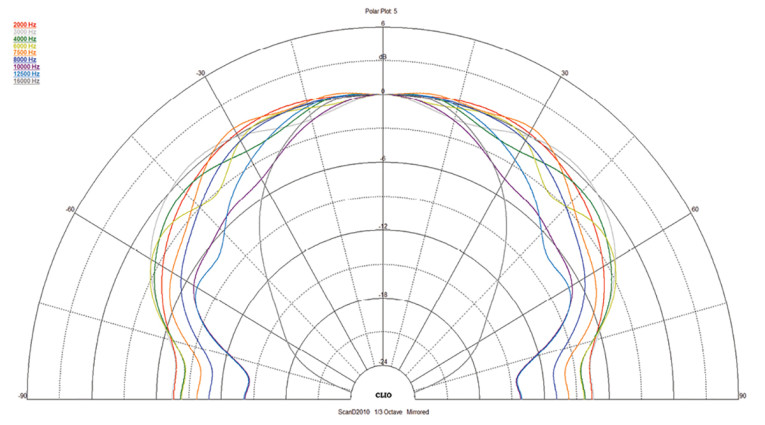
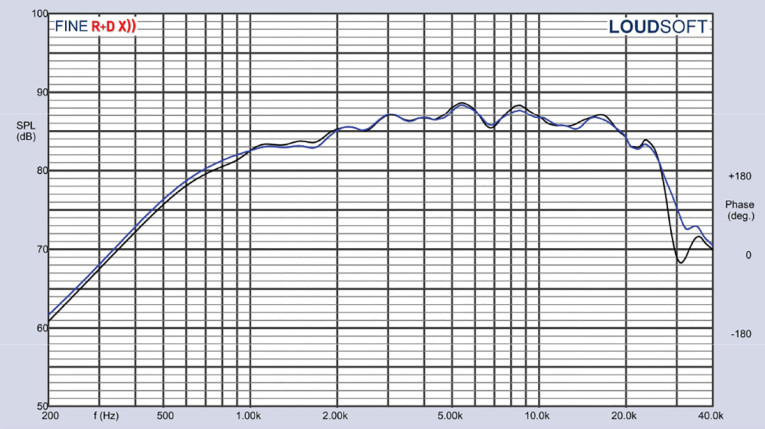
The next test procedure was to again use the Listen SoundCheck V21 software and AudioConnect analyzer and SCM ¼” microphone to measure the impulse response with the tweeter recess mounted on the same test baffle. Importing this data for the Scan-Speak D2010 into the Listen SoundMap software produced the cumulative spectral decay (CSD) waterfall plot shown in Figure 8. Figure 9 depicts the Short Time Fourier Transform (STFT) displayed as a color variegated surface plot.
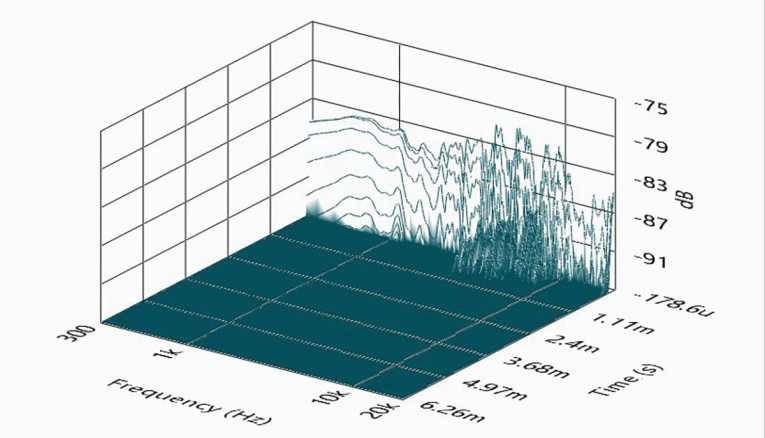

For the final test procedure, I set the 1m SPL to 94dB (6.4V for the D2010) using a pink noise stimulus and measured the second and third harmonic distortion at 10cm, which is depicted in Figure 10. The data again demonstrates very low third harmonic content.
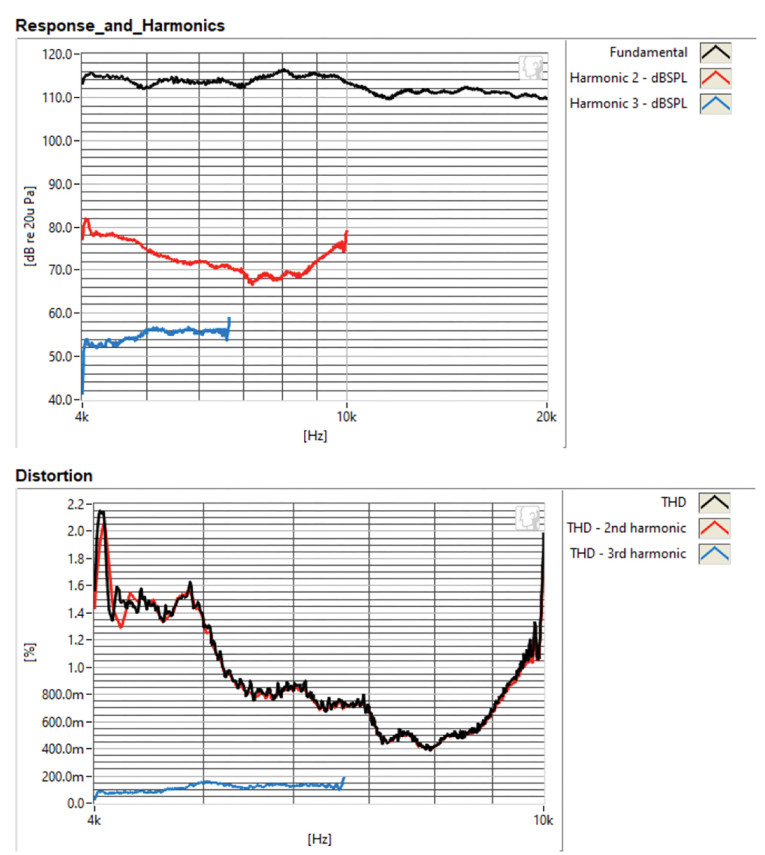
I can recall designing products with the original D2010 more years ago than I care to remember, and it was an outstanding ¾” dome back then, so I suspect that given all the above data, that the new versions are at least as good as the originals.
For more information about these and other well-crafted high-end transducers from Scan-Speak, visit
www.scan-speak.dk. VC
This article was originally published in Voice Coil, October 2023.




